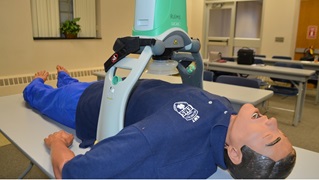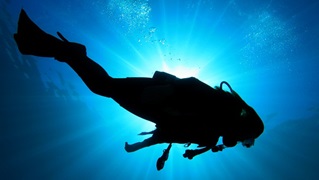On-scene health concerns no longer ‘up in the air’
New multi-gas monitor sniffs out noxious atmospheres for Chicago-area fire department
First on the scene. First, potentially, in harm’s way.
But with a piece of equipment like this, at least John Kelly’s colleagues with the Lake Zurich, Illinois, Fire Department won’t be the proverbial canary in a coal mine.
“Our firefighters encounter all types of situations. All kinds of noxious gases, too,” says Kelly, division chief with the greater Chicago-area organization. “Hydrogen sulfide in confined spaces, like sewers. Hydrogen cyanide in the air after fires. Carbon monoxide . . . that could happen in any number of calls, really.
“You need to know—is it going to be an IDLH atmosphere?”
IDLH—as in, immediately dangerous to life or health—is one less concern the firefighters at Lake Zurich FD will have to face, thanks to their recent acquisition of a MultiRAE gas monitor, which they’ll be using on the front lines.
The MultiRAE instrument monitors the levels of five gases—oxygen, hydrogen sulfide, hydrogen cyanide, carbon monoxide and combustible gas—and also features a photoionization detector (PID), with an audible alarm at dangerous levels.
With 60 full-time employees deployed across four stations, the Lake Zurich FD responds to about 4,000 calls a year—including hundreds as part of its association with the multi-state, Mutual Aid Box Alarm System (MABAS) mutual aid agreement.
Lake Zurich FD is a full-service department, with teams specializing in hazardous materials, structure collapse, technical rescue, underwater recovery, swift-water rescue and confined space calls.
This multi-gas monitor is the second such instrument acquired by the department, and it’s already being used in a multitude of situations where air quality is a potential danger.
“Nearly all our teams need to use a monitor. This tool makes it safer for everybody—for residents, for responders,” says Kelly. “Really, it has the potential to serve an untold number of people.”
Enbridge is committed to improving the quality of life in the communities near our projects and operations, and that includes helping to keep our neighbors healthy and safe. Through our Safe Community program, we offer grants to emergency responder organizations across North America for equipment, training and education.
We’ve contributed about US$7 million to those organizations since Safe Community was launched in 2002. A recent $1,000 donation to the Lake Zurich FD helped purchase that second multi-gas monitor.
“Enbridge’s Safe Community program is a wonderful thing. It shows they’re really involved in the community,” says Kelly. “We’d like to see more companies take that approach.”










